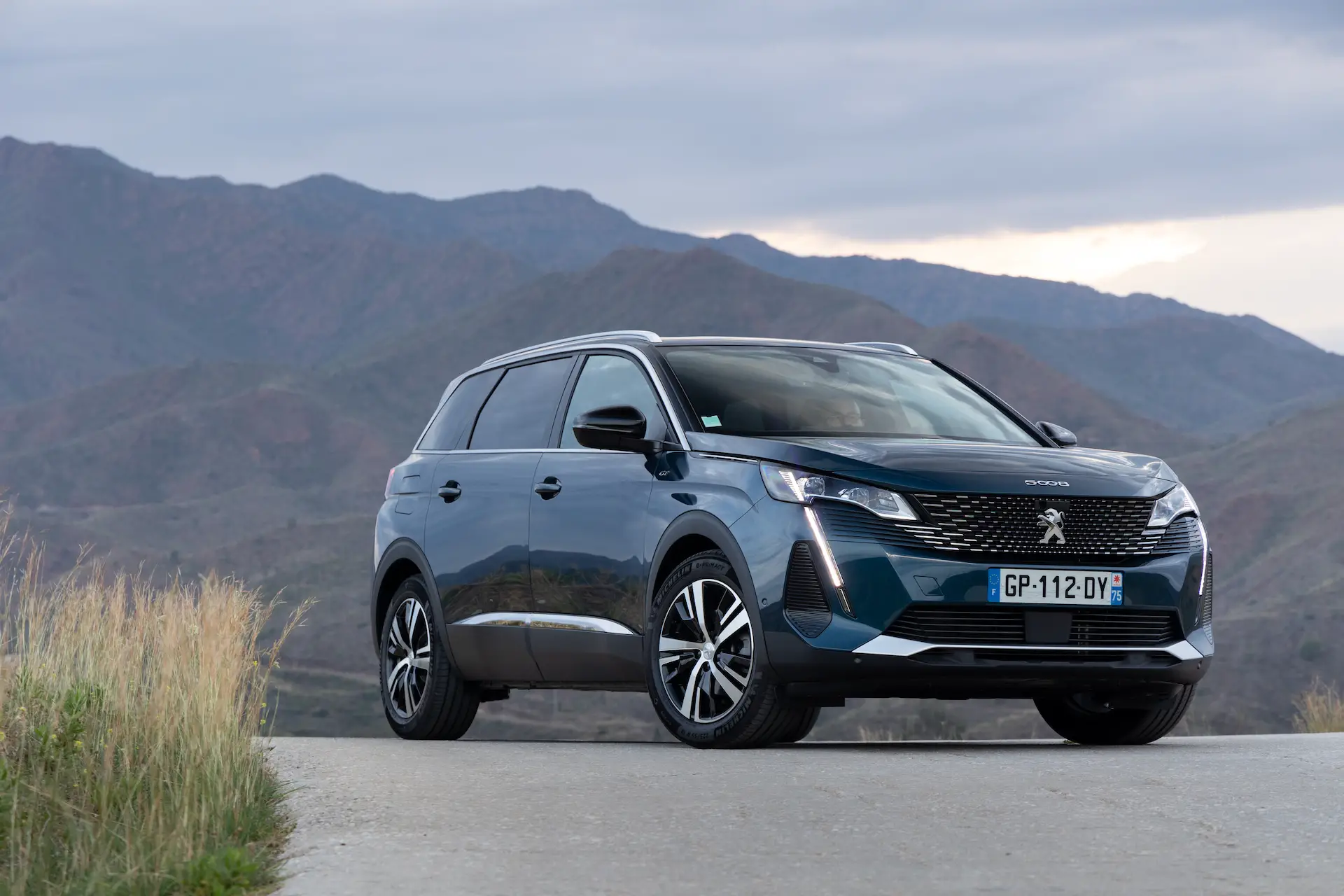Review – first impression Peugeot 5008 48V HYBRID
Hybrid technology from Peugeot
Like every other manufacturer, Peugeot must reduce its average CO2 emissions. For that reason, among others, the manufacturer is betting on 100% electric powertrains, but regular gasoline engines are also increasingly getting some form of electric support. Peugeot is taking the next step with the introduction of 48V Hybrid technology. The Peugeot 3008 and Peugeot 5008 – the 3008’s bigger brother – are the first models to benefit from this hybrid technology. During 2024, the Peugeot 2008 will also get this technology. But the technology will soon be available in other models in the PEUGEOT range, such as the 208, the 308, the 308 SW and the 408. The new 48V Hybrid powertrain replaces the PureTech 130 EAT8. We drove the Peugeot 5008 48V HYBRID.
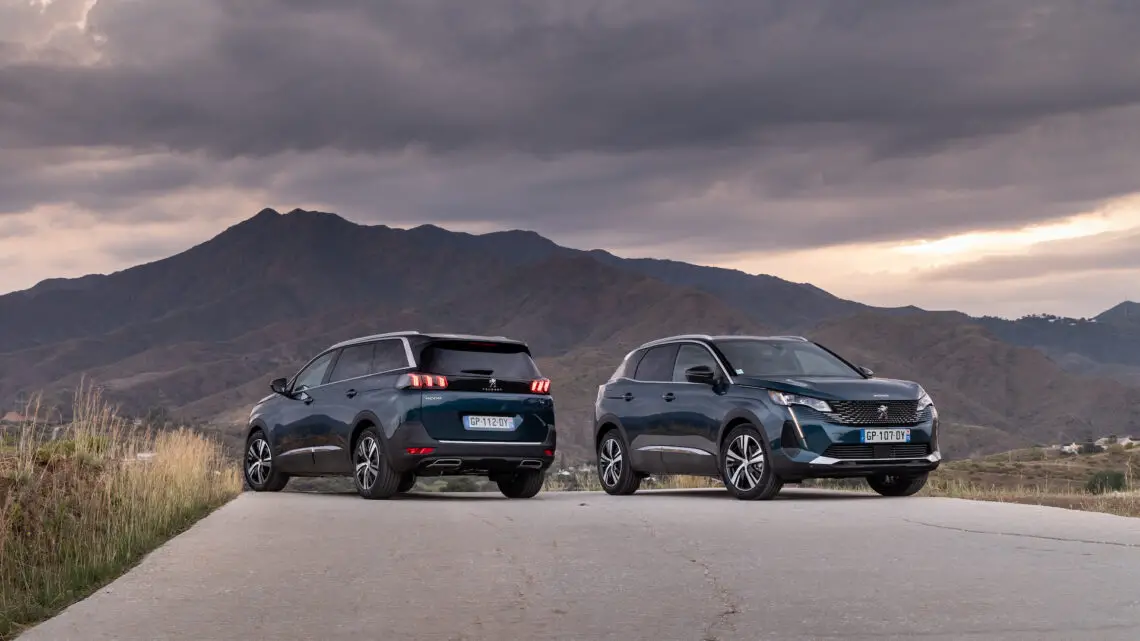
Peugeot 5008 48V HYBRID
What are we talking about when we talk about 48V Hybrid? Peugeot’s new hybrid powertrain consists of a new-generation 1.2-liter PureTech three-cylinder gasoline engine, producing 100 kW (136 hp) at 5,500 rpm and 230 Nm of torque at 1,750 rpm. This gasoline engine is mated to a new electrified six-speed dual-clutch transmission, the e-DCS6. In that transmission, Peugeot incorporates an electric motor. This transmission is specially designed for hybrid systems. The transmission housing houses not only the electric motor, but also the inverter and the ECU.




Electric motor
The permanent magnet electric motor delivers peak power of 21 kW (28 hp) and 55 Nm of torque. The electric motor can drive the car 100% electric when the need for tractive power is low and support the internal combustion engine to reduce fuel consumption. During deceleration and braking, the engine acts as a generator to charge the hybrid system’s 48V battery. It also provides the power for starting the internal combustion engine.
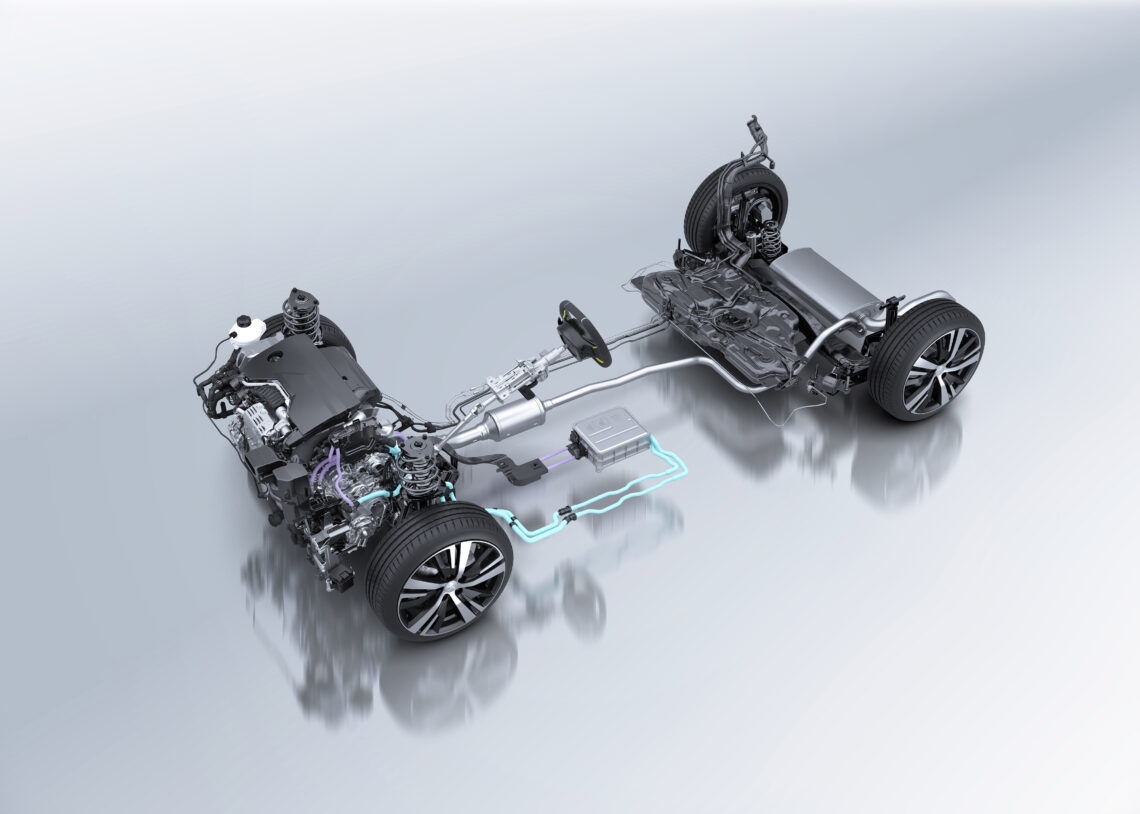
The 48V hybrid battery
On to the 48V lithium-ion battery. That one has a gross capacity of 898 Wh and an available capacity of 432 Wh. This battery comes standard with an 8-year/160,000 km warranty. The 48V battery is located under the left front seat. Thus, no precious interior space is lost, for example in the luggage compartment. Also, Peugeot needs fewer cables, which in turn saves weight.
12V and 48V
The Peugeot 3008 and Peugeot 5008 both feature two electrical networks: a 12V low-voltage network to power the car’s equipment and a 48V high-voltage network to power the hybrid system. Electricity is produced exclusively by the 48V electric motor/generator. A voltage regulator converts the electricity produced to the car’s 12V network.
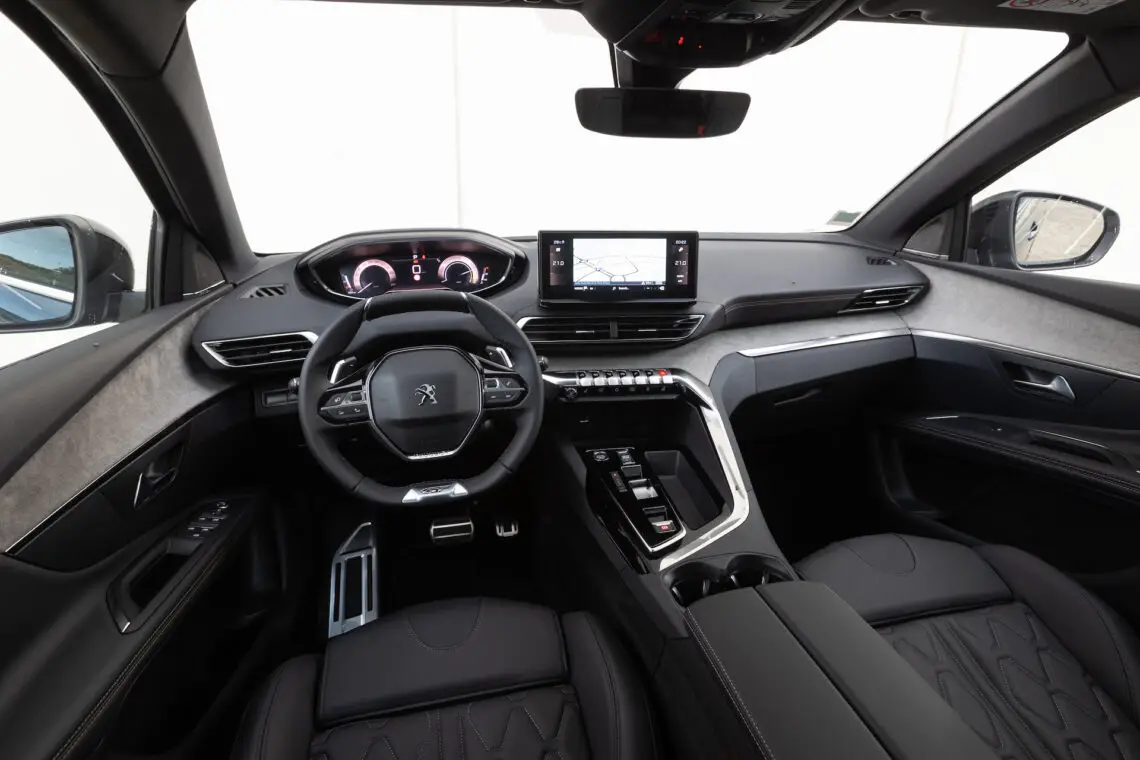
Electric driving
Thanks to the 48V battery, which charges while driving, and the integrated electric motor, this new powertrain offers extra torque at low speeds. Moreover, consumption is as much as 15 percent lower and there are also fewerCO2 emissions. In urban areas, the 3008 and 5008 with the 48V Hybrid system can drive in 100 percent emission-free electric mode more than 50 percent of the time on paper.
This is how it works in practice
The Peugeot 48V Hybrid system works extremely smoothly in practice. In traffic, the combustion and electric motors work both together and independently. During brisk acceleration from low revs, the electric motor provides additional torque to support the gasoline engine. Conversely, during deceleration, for example, the system turns off the gasoline engine and the electric motor serves as a generator to charge the 48V battery. This energy is in turn used, for example, for local emission-free driving. You can see exactly how the hybrid system is functioning through the i-Cockpit.
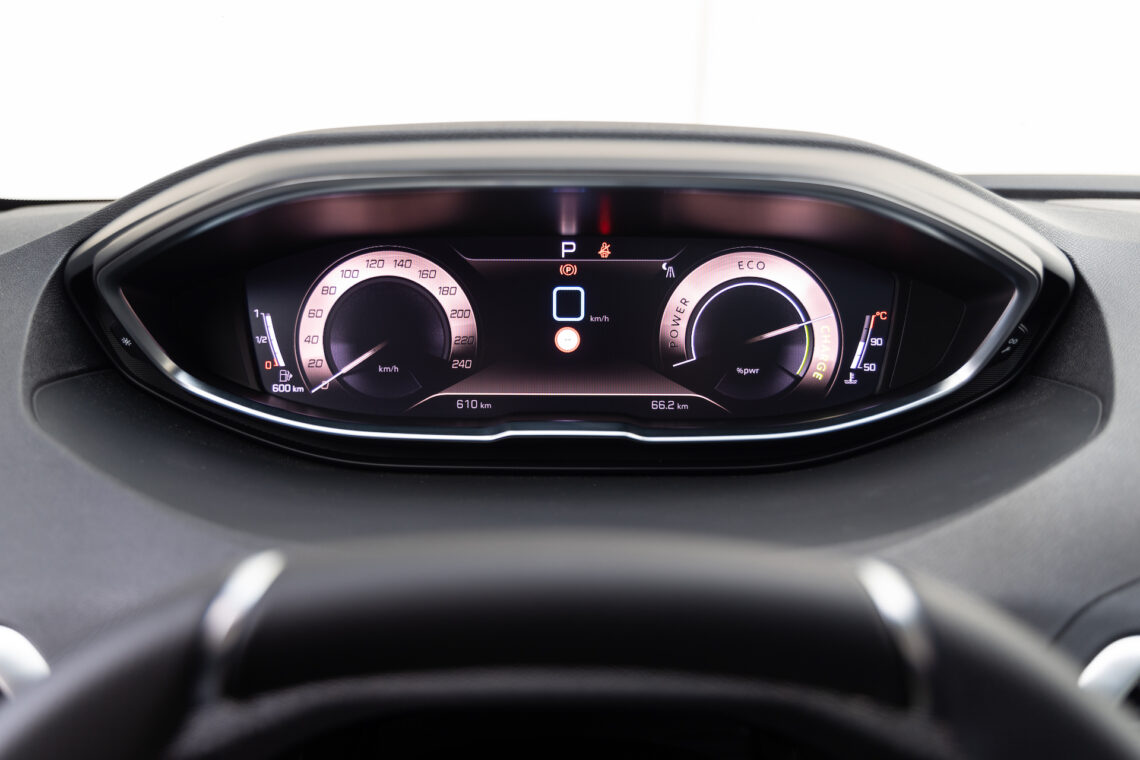
Bit in the back
At higher speeds (up to 145 km/h), the combustion engine cuts off as soon as the driver releases the accelerator pedal at constant speed and when braking. At low speed, the electric motor delivers additional torque with a one-time boost to compensate for the reaction time of the turbocharger. This eliminates the need for downshifting, which increases driving comfort and dynamics. When the driver fully depresses the gas pedal, the electric motor delivers an additional 9 kW (12 hp) of power. An extra push, then, or at least that’s how it feels.
Electric driving
By the way, don’t expect to drive dozens of miles fully electric. That depends purely on how much power you recover during coasting. It ranges from a few hundred meters to just over a kilometer. Much more importantly, compared to a comparable gasoline engine without electric assistance, the 48V Hybrid engine in these SUVs offers an average fuel economy of about 1.0 liter/100 km. Of course, this does depend heavily on your own driving style. Also nice: CO2 emissions drop significantly, by up to 20 g/km. This in turn results in less BPM penalty.

Differ
The driver can see on the display all relevant information about the operation of the hybrid system. Among other things, the display shows 100% electric driving (speedometer in blue), energy flow in the system, battery charge level, operating status via a power meter (Charge, Eco, Power) and the percentage of total distance traveled that has been driven in electric mode. This can be done at any time or at the end. In addition, these models have an AVAS (Acoustic Vehicle Alerting System) system that warns pedestrians and cyclists around the car of the approaching car with an audible signal. The system is active up to 30 km/h.
Conclusion
Peugeot’s new 48V Hybrid technology is pleasing in practice. The interplay between the gasoline and electric motor is smooth and you also have noticeable extra pulling power at lower revs. That just drives just a little bit nicer. The new automatic is also a good match for the powertrain. In that regard, it is a good development that Peugeot is rolling out this technology across almost its entire model lineup.


